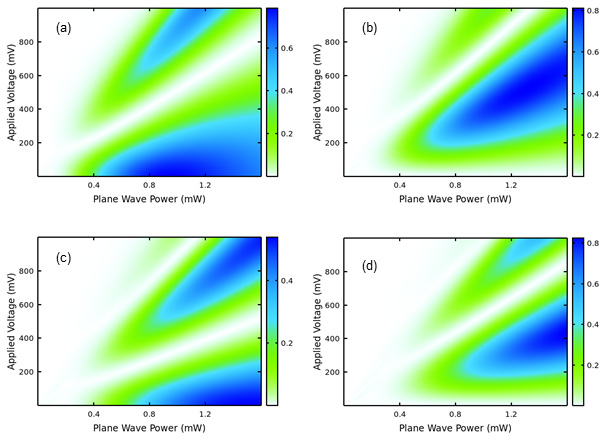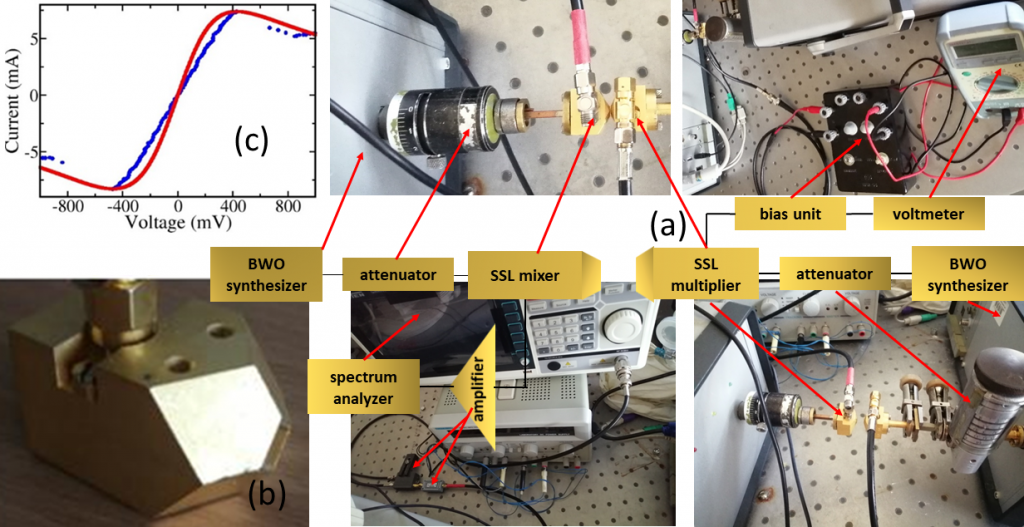
The terahertz range offers opportunities for detecting all sorts of things but using this range has proved difficult until now
Read Arabic story here: http://www.researchku.com/news-extended/65
Terahertz radiation – a band of the electromagnetic spectrum between microwaves and the infrared range – is useful for detecting toxic gases, explosives, and even diseases. But scientists have only been able to generate terahertz radiation at temperatures below 200 kelvins (-73 degrees Celsius) or lower, making it difficult to make use of this unique band in real-world applications, resulting in what’s known as the ‘terahertz gap.’
Now, researchers from Khalifa University are making progress towards a new way of generating terahertz radiation at room temperature by capitalizing on the unique electronic characteristics of a semiconducting superlattice material.
“This research has great potential in the UAE because the terahertz range of frequencies can be used to detect dangerous gases in the environment, explosives, and a number of gases in exhaled human and animal breath,” explained Dr. Mauro Pereira, Professor and Chair of the Khalifa University Department of Physics. “It could also be used to screen diseases in an early stage without invasive testing, and could therefore become a powerful tool in diagnosis for respiratory, gastrointestinal, and hepatic diseases.”
Dr. Pereira is lead author on a paper that was recently published in Scientific Reports describing the new technique to generate terahertz radiation. He was joined by Dr. Vladimir Anfertev and Dr. Vladimir Vaks, both from the Institute for Physics of Microstructures, Nizhny Novgorod, Russia, and Dr. Yuliia Shevchenko from the Czech Academy of Sciences Institute of Physics.
To reach the terahertz radiation frequency at room temperature, the researchers created a special kind of material, known as a semiconductor superlattice. Semiconductor superlattices are made by layering atomically thin sheets of different materials (such as silicon and graphene) on top of each other. The layering gives the material an important electronic property called “nonlinearity.”

A material that is nonlinear behaves in a peculiar way. When it is radiated with light (or any form of energy), the atomic crystals in the material will vibrate not only at its natural frequency, but also at its “harmonic frequencies.” The harmonic frequencies are the waveforms of the natural frequency multiplied by two, three, four, five and so on until the frequency becomes so faint that it is no longer observable.
A nonlinear material with a natural frequency of 10 gigahertz, could have harmonic frequencies of 20 gigahertz, 30 gigahertz, 40 gigahertz and so on. As the harmonic frequency increases, however, the vibrations become more faint.
“Nonlinear physics is playing a major role in bridging what was once called the ‘terahertz gap’ and its multitude of applications,” explained Dr. Pereira.
“We take a source at a frequency that is easy to generate and use that to create higher frequencies in harmonic generation. We take a source operating at around 120 Gigahertz and multiply it all the way to 720 Gigahertz and beyond, using semiconductor superlattices and controlling the nonlinearities of the material. We use similar superlattices to detect the high frequencies at room temperature in an efficient way.”
The ability to leverage semiconductor superlattices and their corresponding harmonics can get scientists closer towards creating efficient devices that can generate radiation at terahertz frequencies from gigahertz inputs.
“Semiconductor superlattice multipliers were only expected to deliver odd harmonics, but we have shown that they can also generate even harmonics. By actually controlling the even harmonics and increasing their output by several orders of magnitude with applied voltages, we open the possibility of exploiting a wide range of frequencies,” explained Dr. Pereira.
“The superlattices are already being used by our Russian colleagues for breath analysis and we are designing new samples and devices based on them here at Khalifa University.”
Jade Sterling
Science Writer
Erica Solomon
Senior Publication Specialist
10 December 2020






